Making bullets
João Jacinto & Katherine SiroisBy setting the reminiscences of the Napoleonic wars and the Spanish guerrillas against the invader as a backdrop, João Jacinto’s mesmerising series invites the viewer to an imaginary hunt of its hidden visual and historical ghosts and vestiges. Indeed, the saturnine large-scale drawings were made after Francisco Goya’s Powder production in the Sierra de Tardienta dating from between 1810 and 1814.
Repeating themselves with dynamic variations, the spectral yet heavily layered and textured drawings open a space for the hallucinatory presence of Goya’s active gaze when visiting Zaragoza, in 1808, with the general José de Palafox y Melci. Witnessing the ravages made by the French artillery, Goya simultaneously started his print series The Disasters of War, which he entitled The Fatal consequences of Spain's bloody war with Bonaparte and other emphatic caprices, along with the two oils on wood panels dedicated to the Spanish civilian resistance and their clandestine production of powder and ammunitions.
If the Goya-based series inevitably recalls the long artistic tradition of «taking pain and pleasure in constantly copying the works done by the hand of great masters» (Cennino Cennini, The Book of the Art. A Contemporary Practical Treatise on Quattrocento painting), Jacinto’s images came out from an utterly uncommon process anchored in the spatial and temporal phenomenon of random stratification of materials and sediments. As a matter of fact, the book’s double-page spread featuring the reproduction of Goya’s painting remained on the ground of his atelier during years. In the midst of dust and dirt, the printed image gradually evolved with the accumulation of charcoal and pastel powders among other residues. Forming confused black, grey, white and colourful deposits, progressively overlapping the human figures featured in Goya’s scenery, the process went on until their complete disappearance.
It is precisely this vanishing - yet still persisting - image that caught the eye of the artist. Once depicting Palafox’s covert operation of gunpowder production in the luxurious grassy fields, brush and woodlots of Aragon, other powders came to invade Goya’s vision of war preparations and disasters. From this slow irruption emerged a contemporary and tormented vision of expressive and dreary landscapes, deprived of human presence and which hold obvious tragic resonances.
Today, when looking at Goya’s painting reproduction in Jacinto’s atelier, still laying on the floor in the vast space among the many paint brushes, art material, books, printed images and the artist’s ongoing painted canvas and drawings on paper, one can only perceive sediments. Goya’s vision is now totally out of reach. Metamorphosed into some kind of remote cosmic wilderness, echoing constellations and interstellar dust dispersion, it perhaps reveals the relentless and inexorable detachment of all things. Unless it manifests the life creation process in which everything is continually generated and transformed, from images and memory to human consciousness.
Katherine Sirois
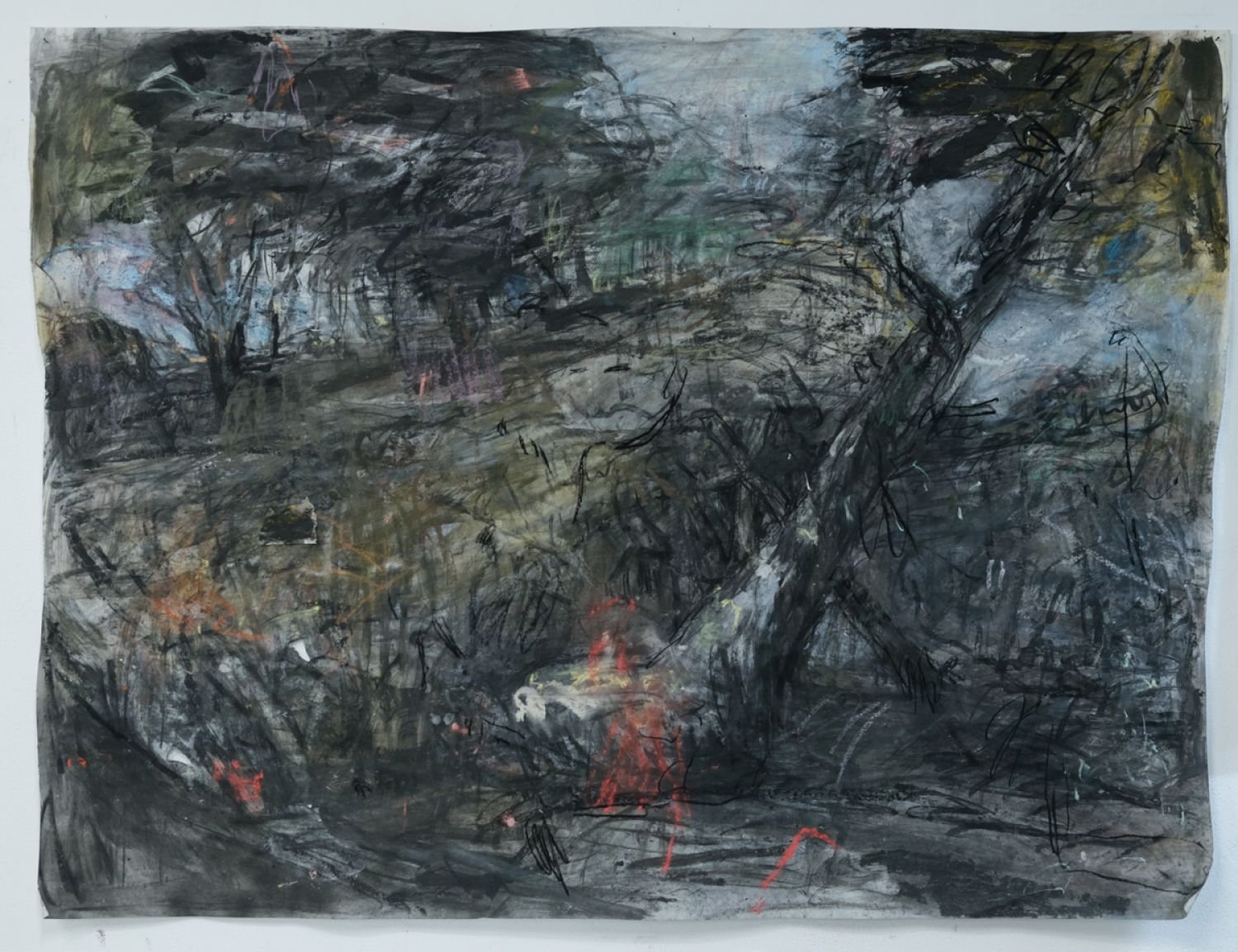
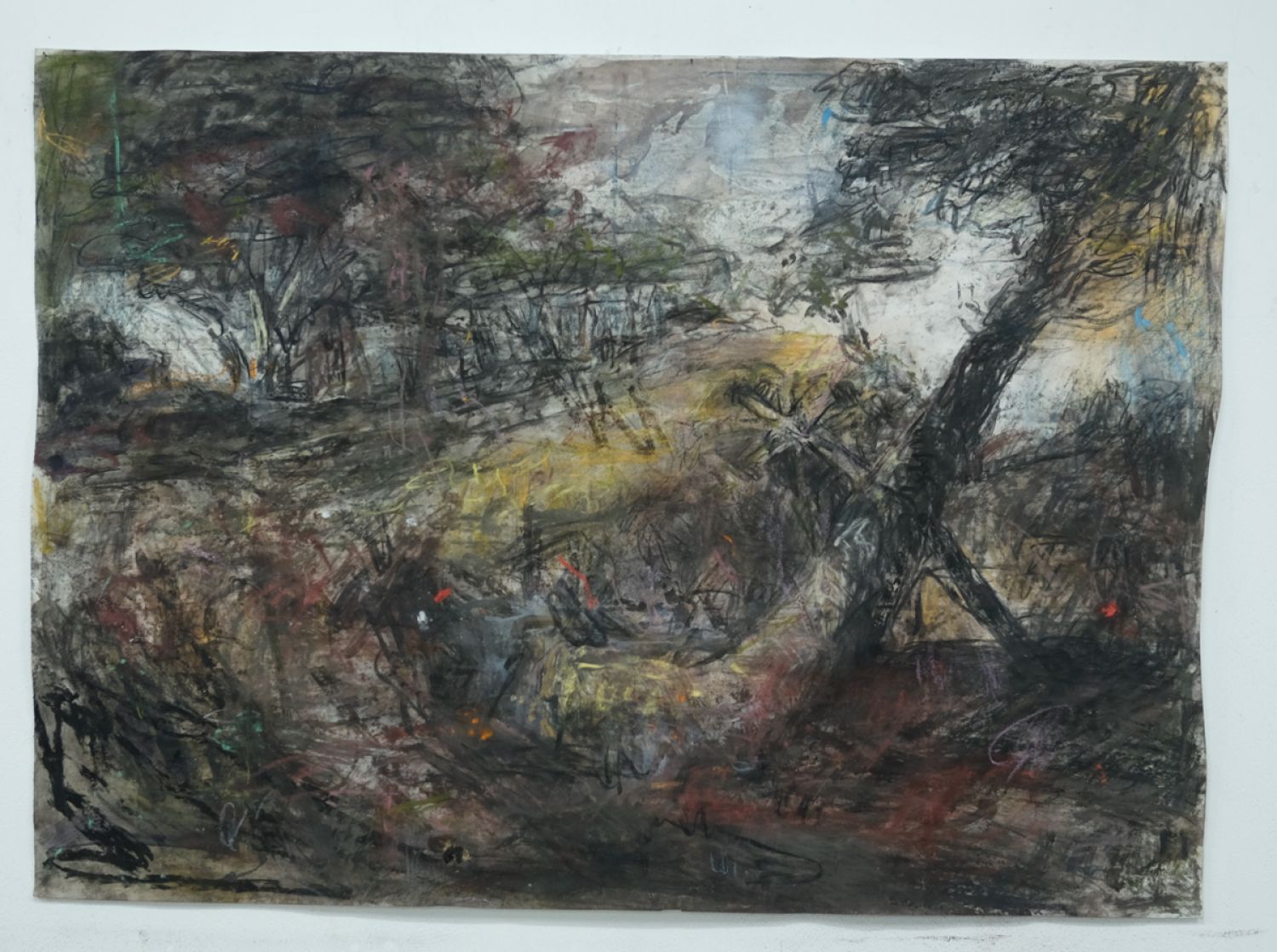
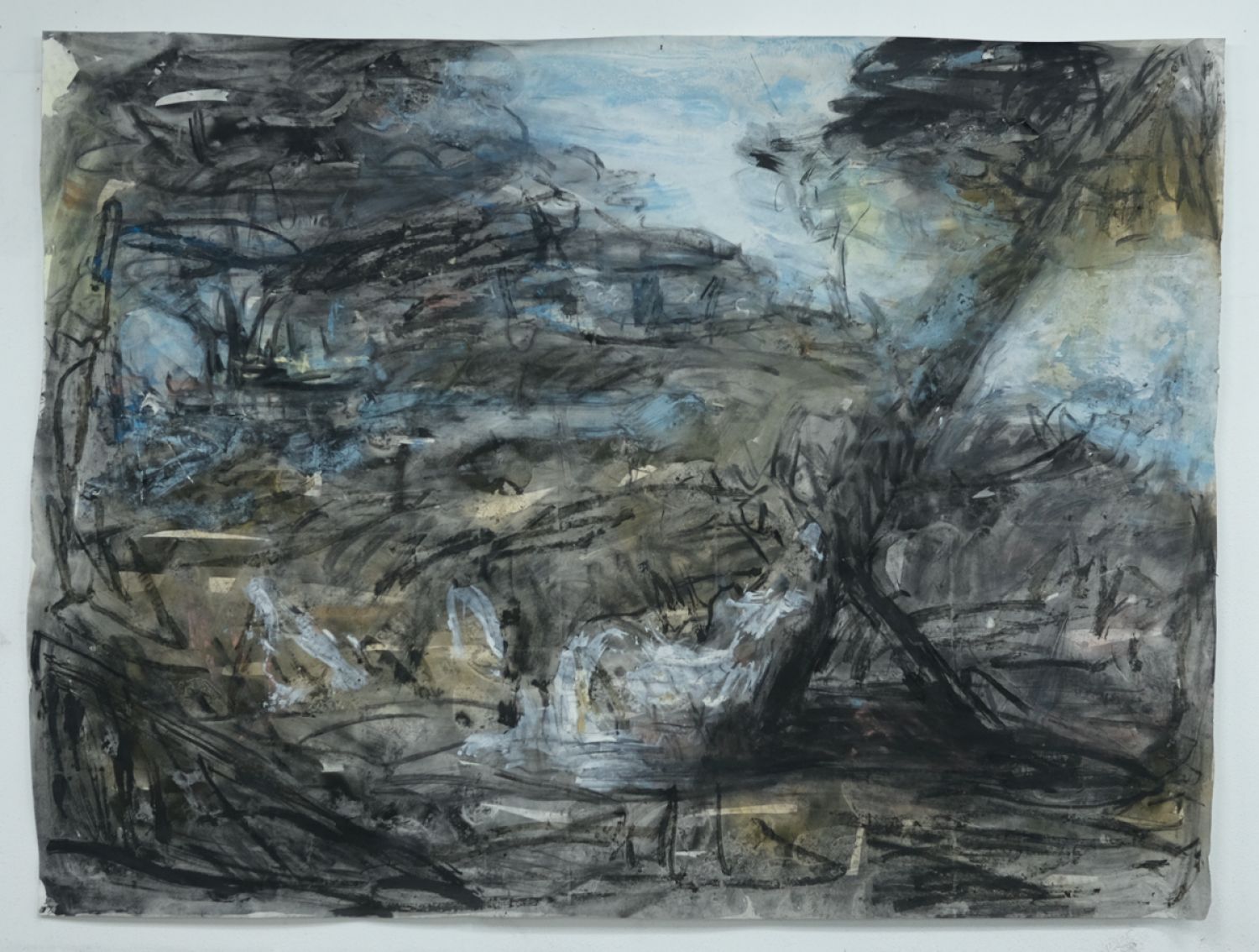
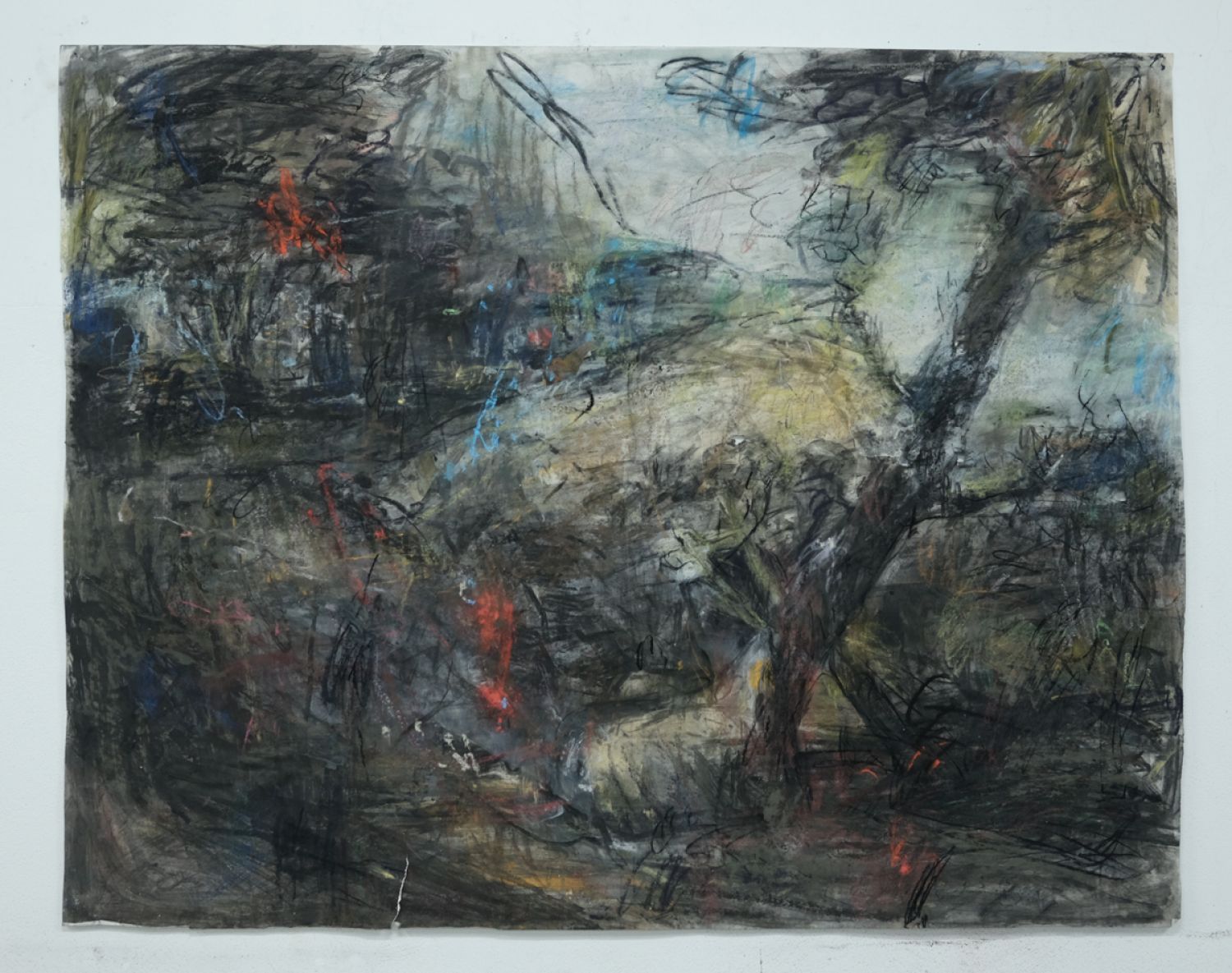
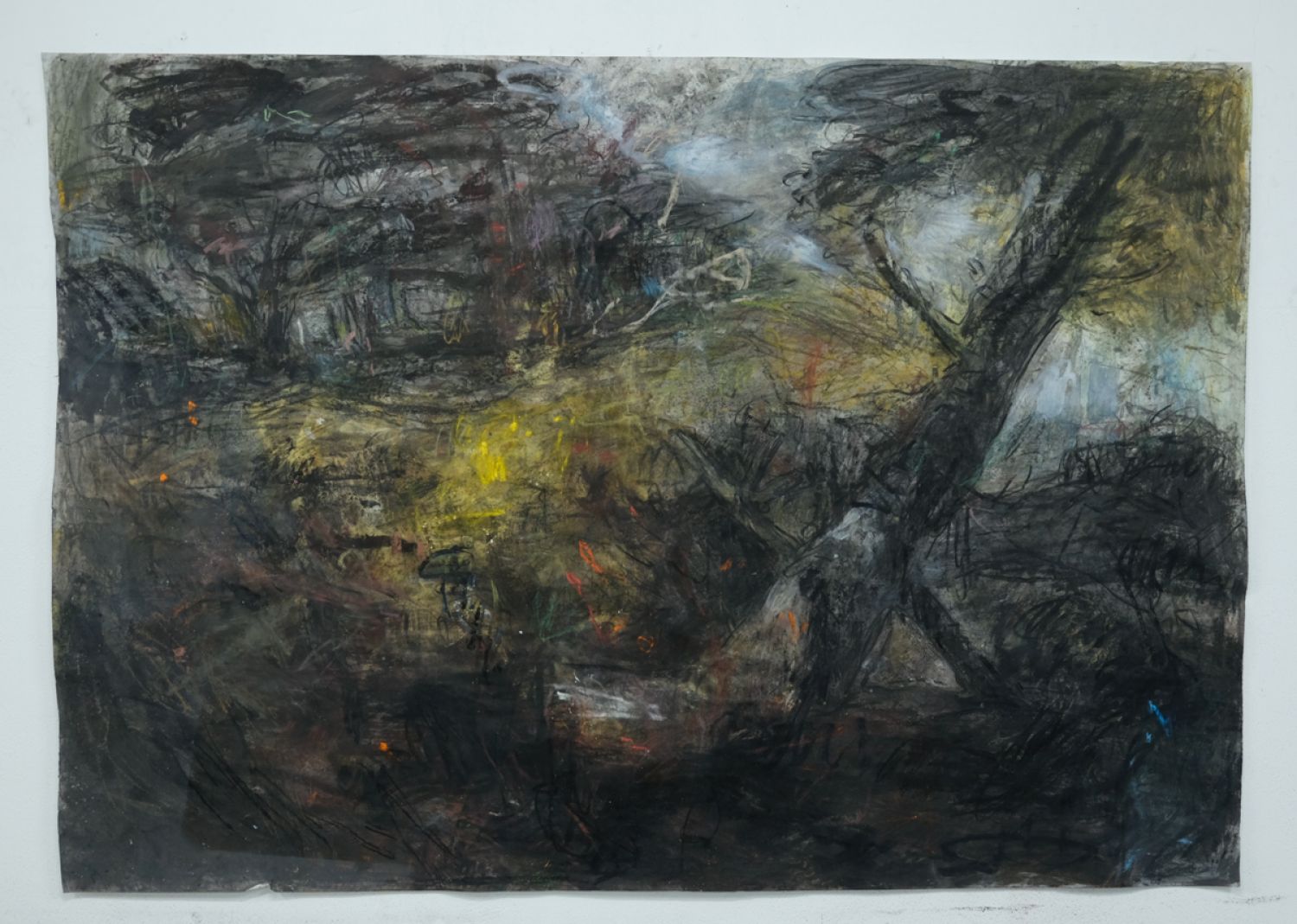
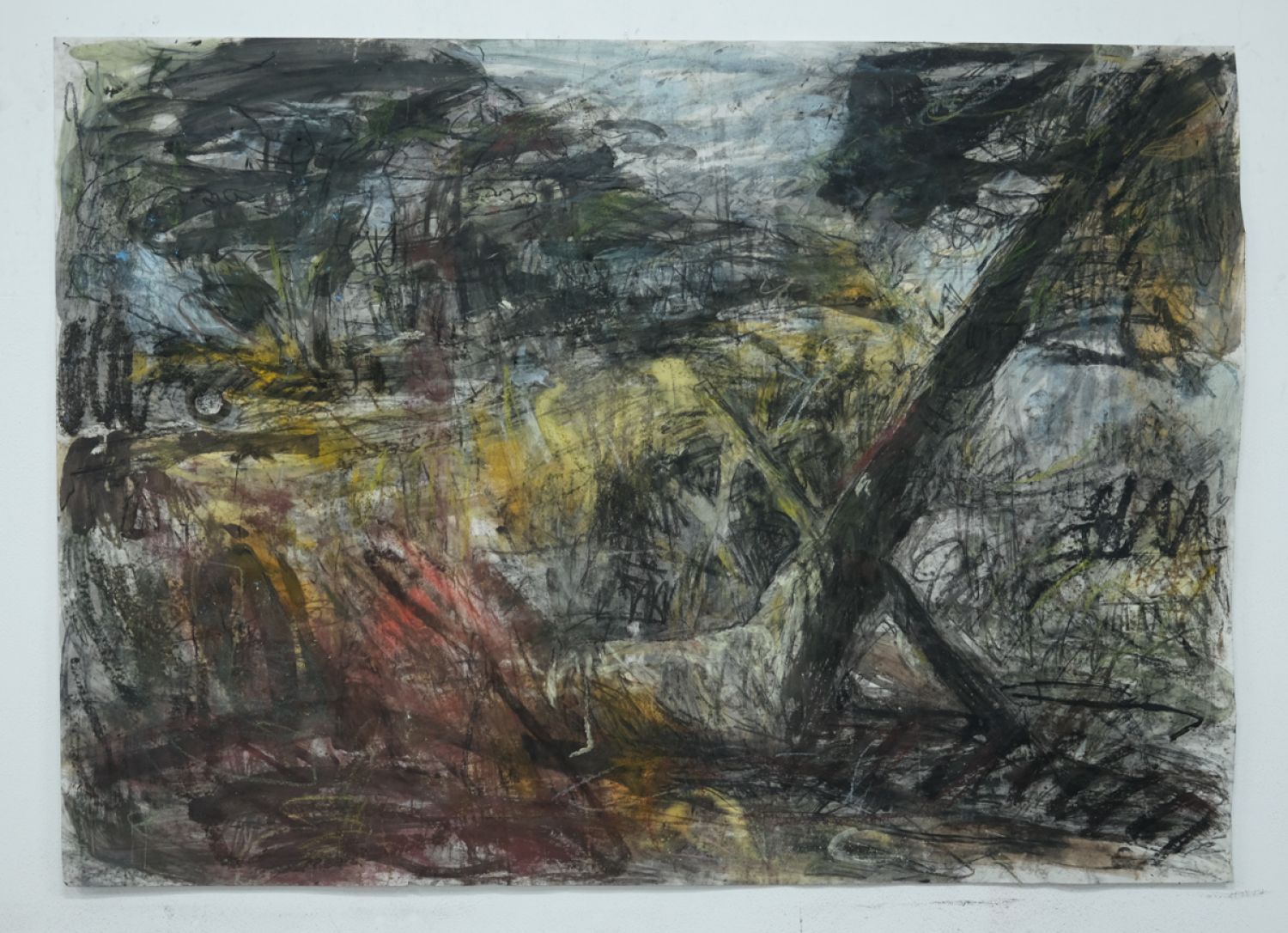
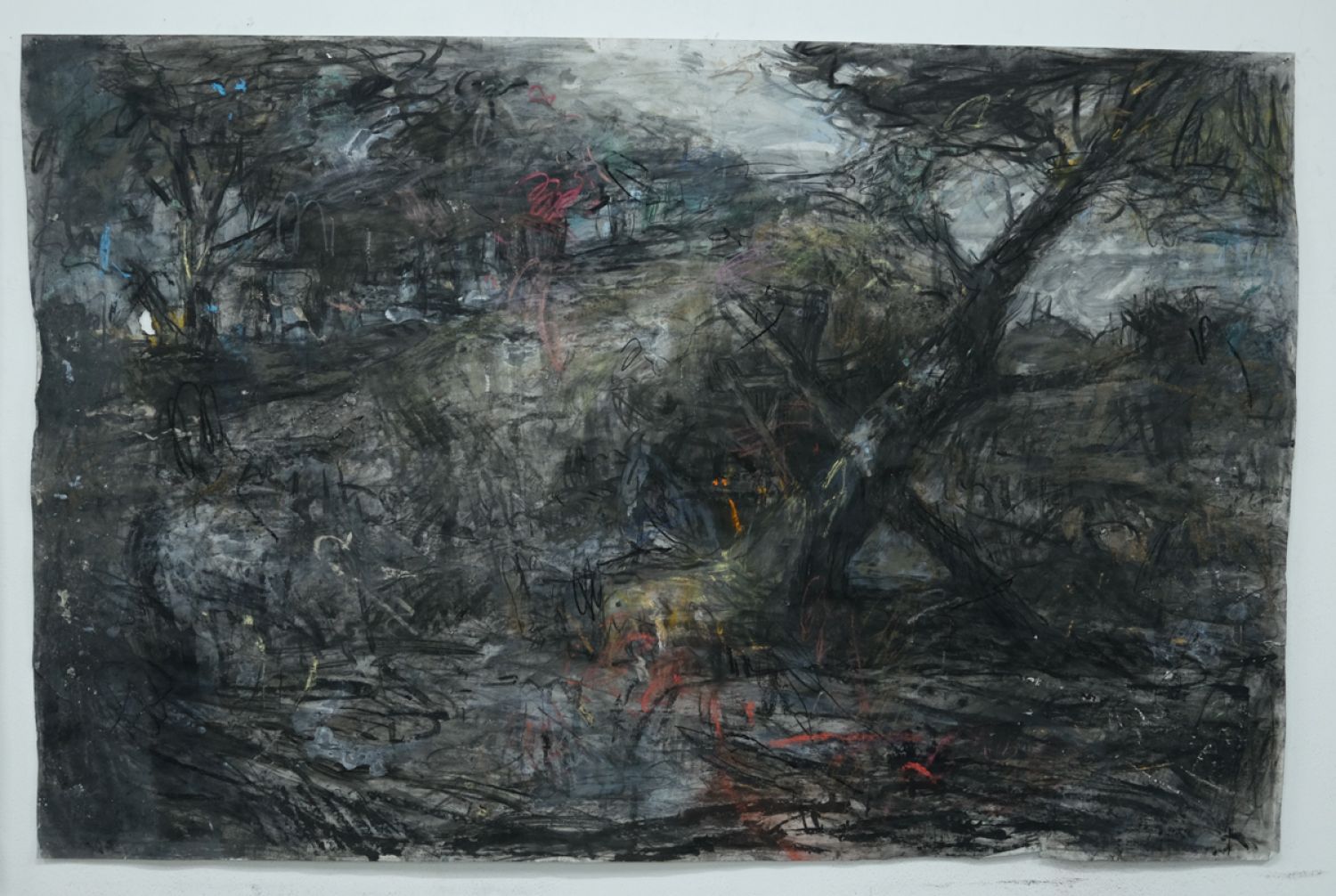
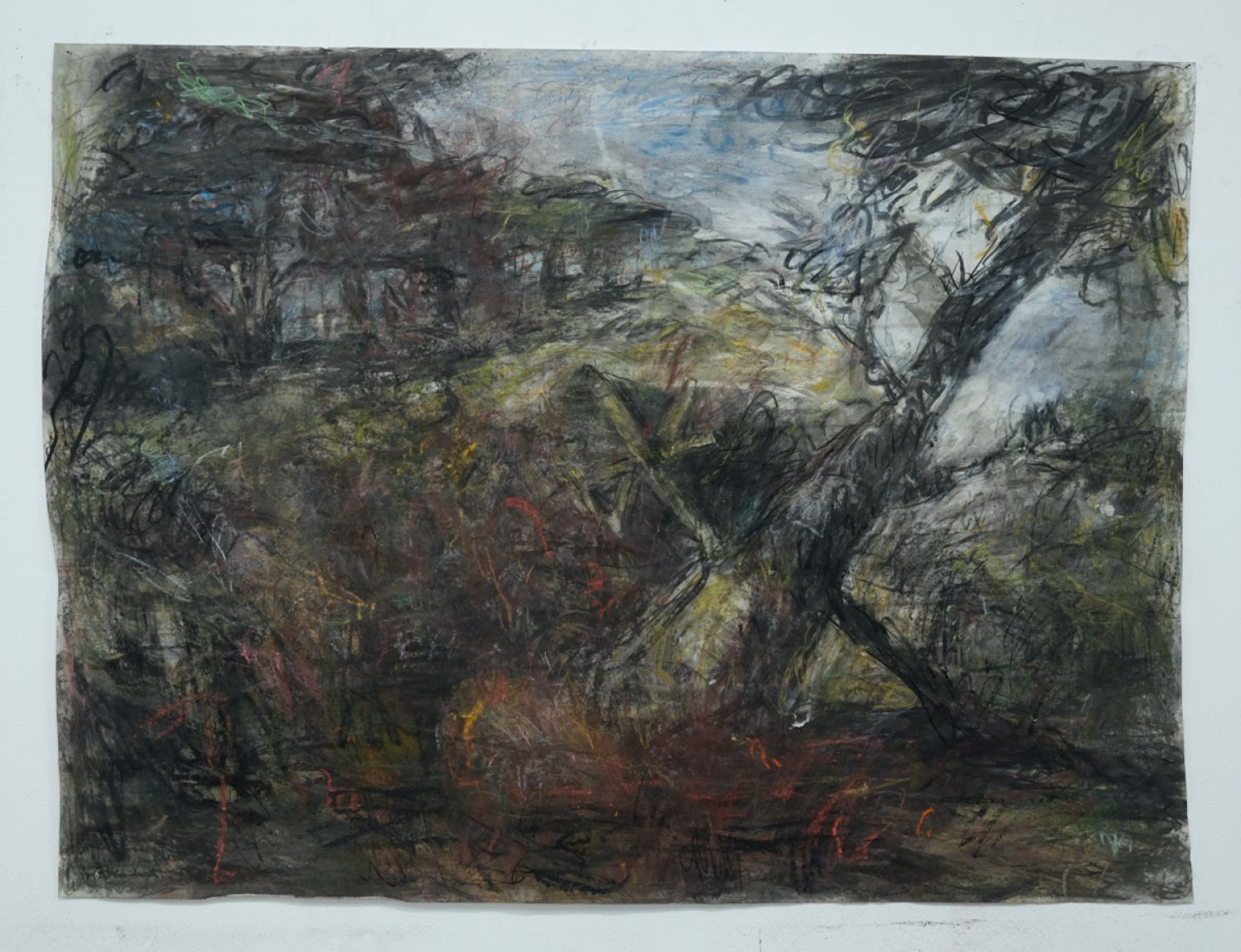
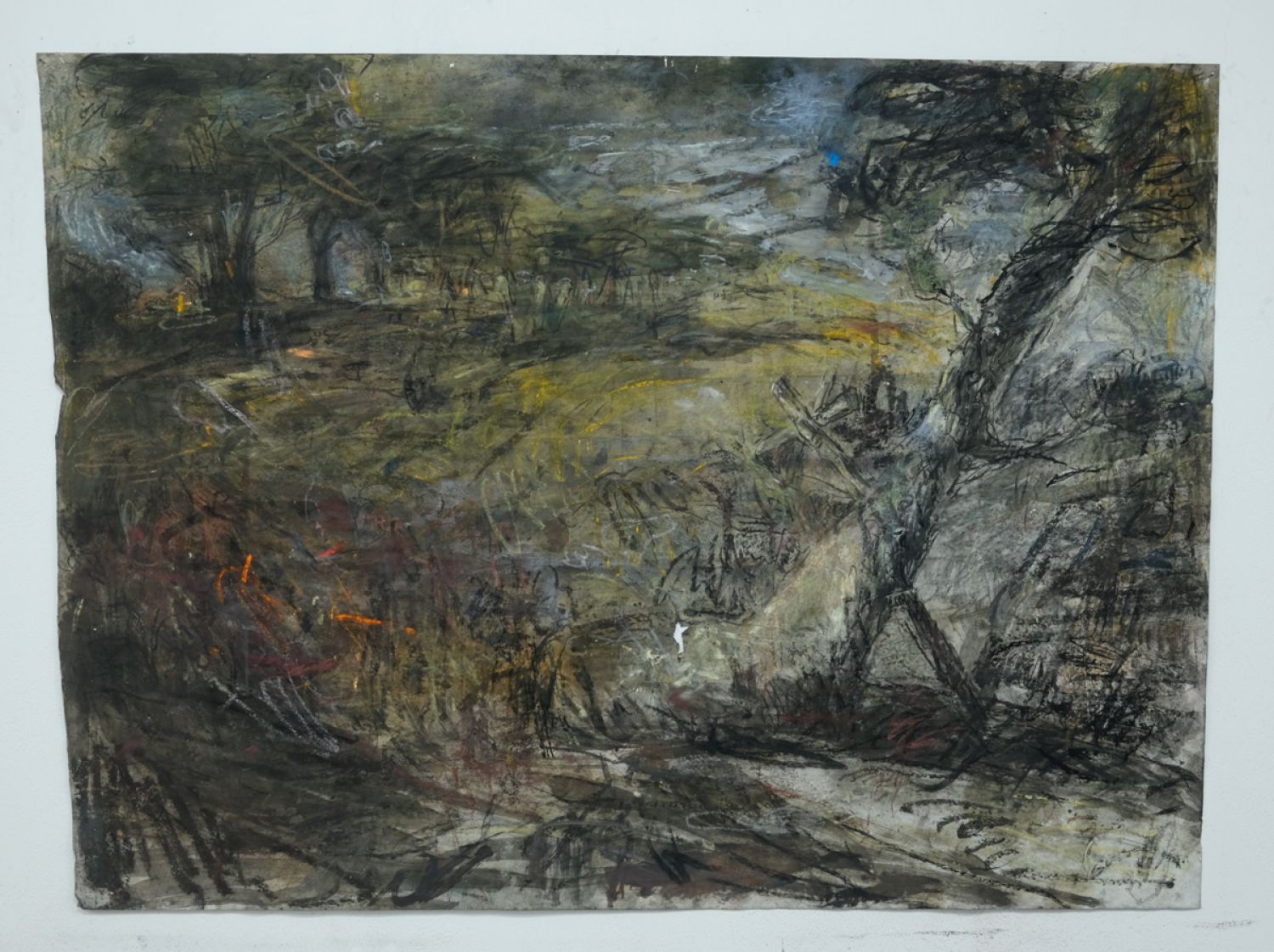

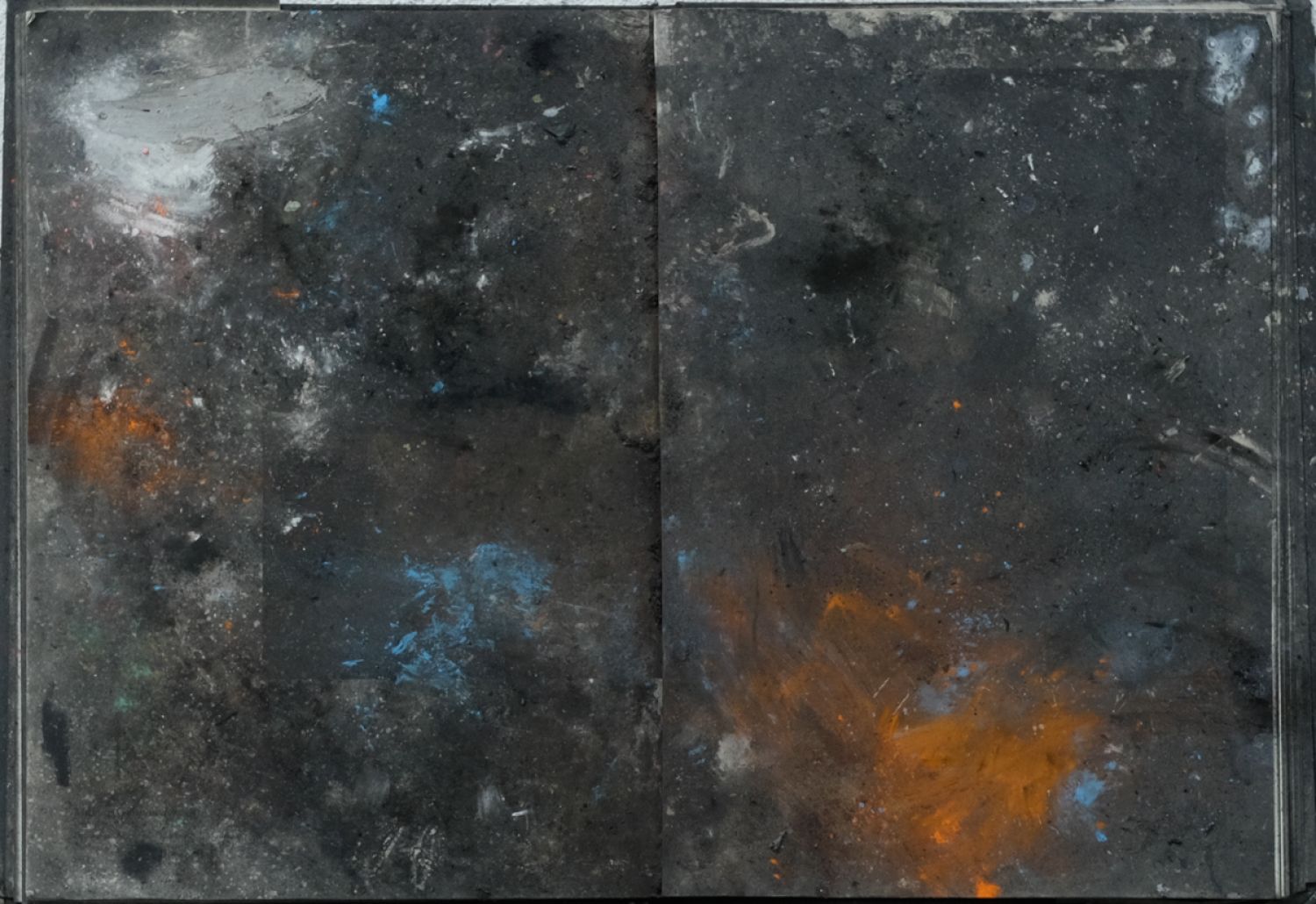
Drawings: by João Jacinto. Dimensions: 150 x 220 cm (irregular). Date of realization: 2017
Images: Pedro dos Reis © João Jacinto Studio



